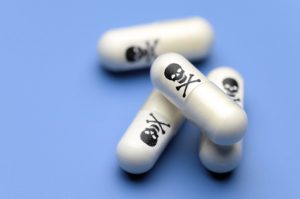
The Most Popular Drug in America is an Antipsychotic—and No One Really Knows How it Works
The Raw Story – November 16, 2014 By Martha Rosenberg Does anyone remember Thorazine? It was an antipsychotic given to mentally ill people, often in…


The Raw Story – November 16, 2014 By Martha Rosenberg Does anyone remember Thorazine? It was an antipsychotic given to mentally ill people, often in…
Phillip Sinaikin, MD, is a Florida psychiatrist who has been in practice for 25 years. Author of “Get Smart About Weight Control” and co-author of “Fat Madness: How to Stop the Diet Cycle and Achieve Permanent Well-Being,” his new book focuses on excesses and industry influence in the field of psychiatry.
Rosenberg: Your new book, Psychiatryland, traces how deception, conflicts of interest, medical enabling and direct-to-consumer advertising have resulted in millions being on psychiatric drugs they don’t need. One patient you describe has legitimate mourning and grief work to do after his wife leaves him for his own cousin. But his grief is pathologized into “bipolar disorder” by the system, including his own mother.
Why are troops killing themselves? The long awaited Army report, “Health Promotion, Risk Reduction, Suicide Prevention” considers the economy, the stress of nine years of war, family dislocations, repeated moves, repeated deployments, troops’ risk-taking personalities, waived entrance standards and many aspects of Army culture. What it barely considers is the suicide-inked antidepressants, antipsychotics and antiseizure drugs whose use exactly parallels the increase in US troop suicides since 2005.
Prescription drug cocktails have lead to at least 32 accidental overdoses among Marines and soldiers since 2007, bringing military medical practices for treating physical and psychiatric problems under scrutiny. Most of the troops had been prescribed “drug cocktails,” combinations of drugs including painkillers, sleeping pills, antidepressants and anti-anxiety drugs, interviews and records show. In all cases, suicide was ruled out.
About 60% of patients with psychiatrist office visits leading to a drug prescription received at least two medications in 2005-2006, according to government survey data. That was up from about 43% in 1996-1997. “These trends put patients at increased risk of drug-drug interactions with uncertain gains for quality of care and clinical outcomes,” the researchers stated.